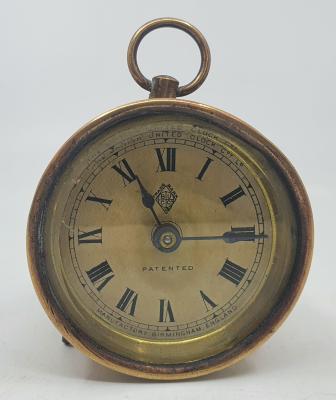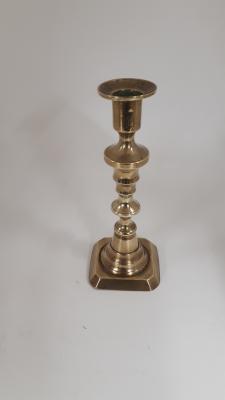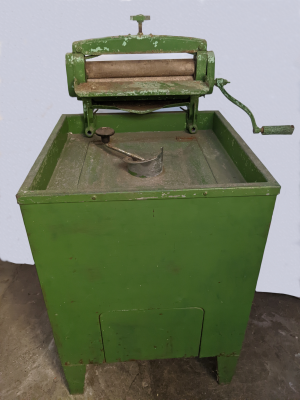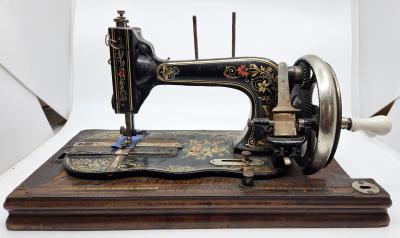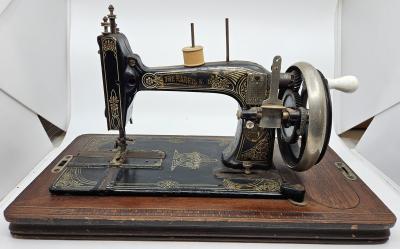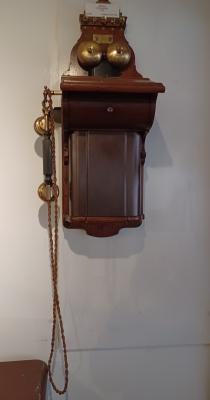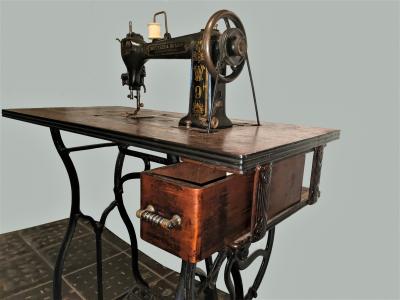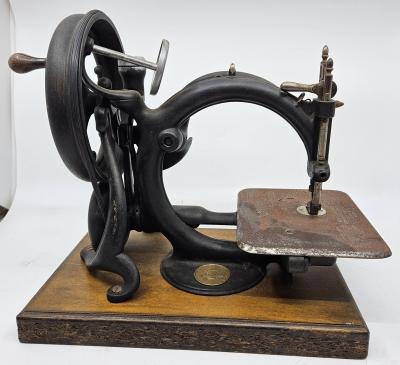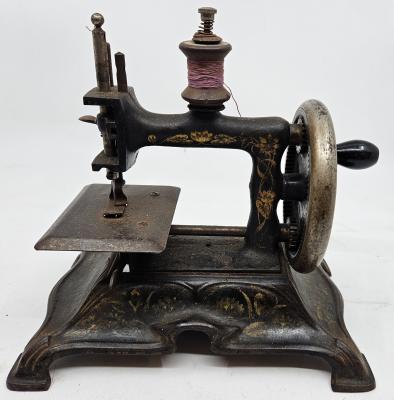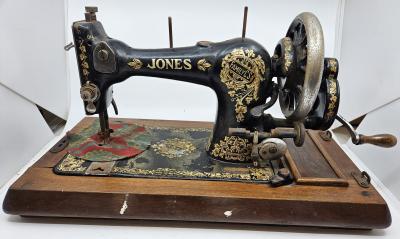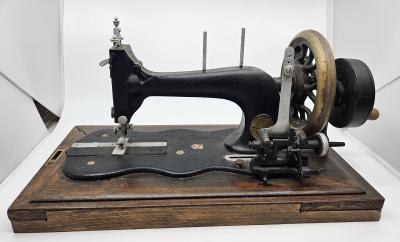Brass Gimbal
A small brass bucket that is attached at 2 pivoting poles (N and S) by a thin, flat circular brass band. This circular brass band is then attached at 2 pivoting poles (E and W) to a semi circular, thin, flat, brass band which is permanently attached at the N point to a brass arm at a 30 degree angle. The brass arm has 2 points where it would be attached to a wall. The lower point has a decorative wall mounting plate and the upper point a plain square wall mount. The small bucket contains a small fluid burning lamp.
The gimbal was first described by the Greek inventor Philo of Byzantium (280–220 BC). Philo described an eight-sided ink pot with an opening on each side, which can be turned so that while any face is on top, a pen can be dipped and inked and the ink never runs out through the holes of the other sides. This was done by the suspension of the inkwell at the center, which was mounted on a series of concentric metal rings so that it remained stationary no matter which way the pot is turned.
In Ancient China, inventor and mechanical engineer Ding Huan created a gimbal incense burner around 180 AD.
Details
Details
A gimbal is a pivoted support that permits rotation of an object about an axis.
This gimbal would have be attached to a cabin wall on the ship holding a small lantern to provide light and was found on Wonnerup beach by Matron Mabel Bell of Ray Lodge, Villa Maria.
More items like this
Other items from Busselton Historical Society
- Washing Machine, Cotto
- Vehicle Registration Plates - Australia
- Saxonia Sewing Machine
- The Harris Hand Sewing Machine
- Wall Telephone - Alex Bovell Office
- Wheeler & Wilson D9 Sewing Machine
- Jones Medium CS Type8 Sewing Machine
- Willcox & Gibbs Sewing Machine
- Toy Sewing Machine
- Jones Hand Operated Sewing Machine
- Frister & Rossman Sewing Machine
- Treadle Sewing Machine. Ruby.
Scan this QR code to open this page on your phone ->

